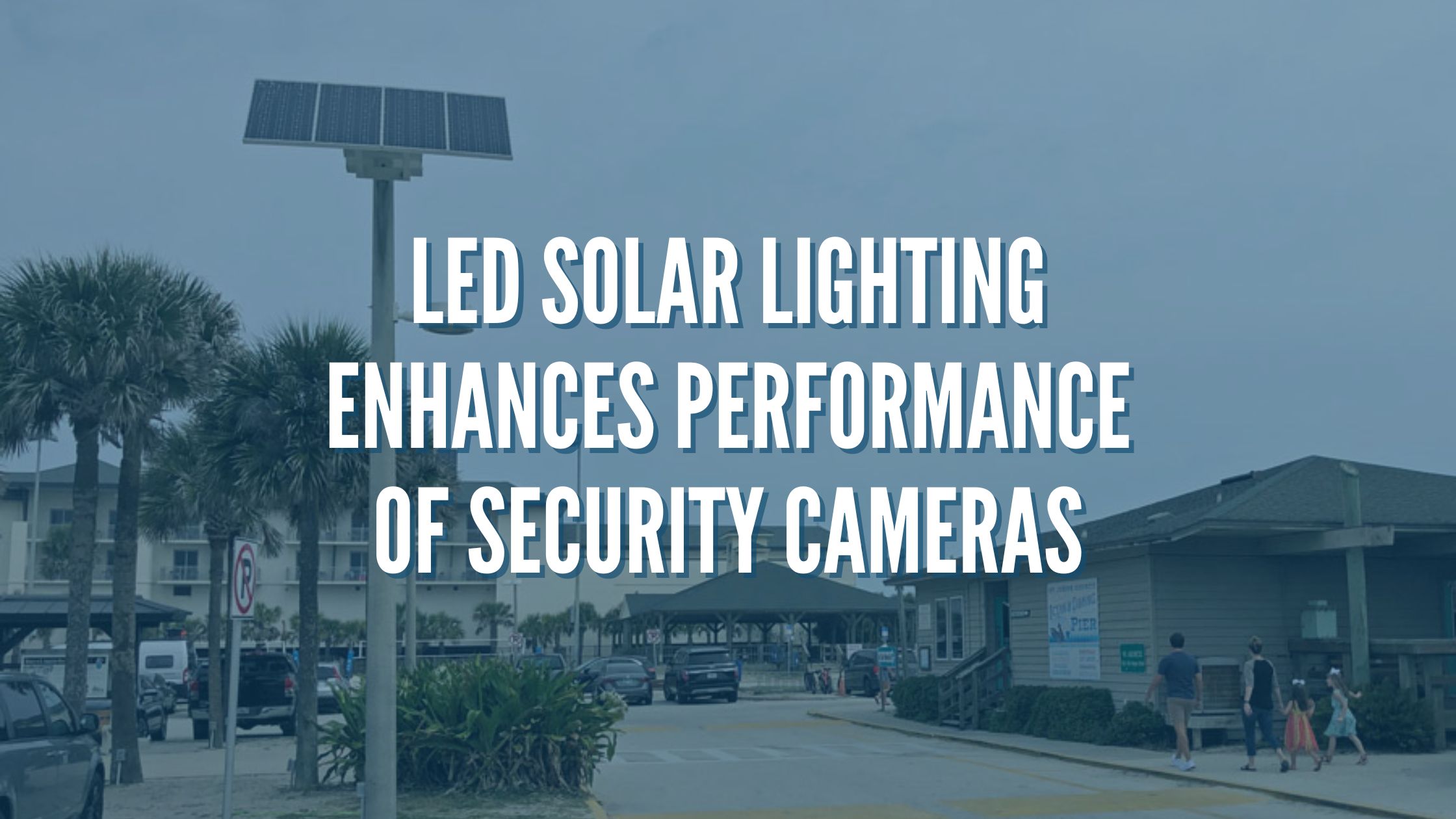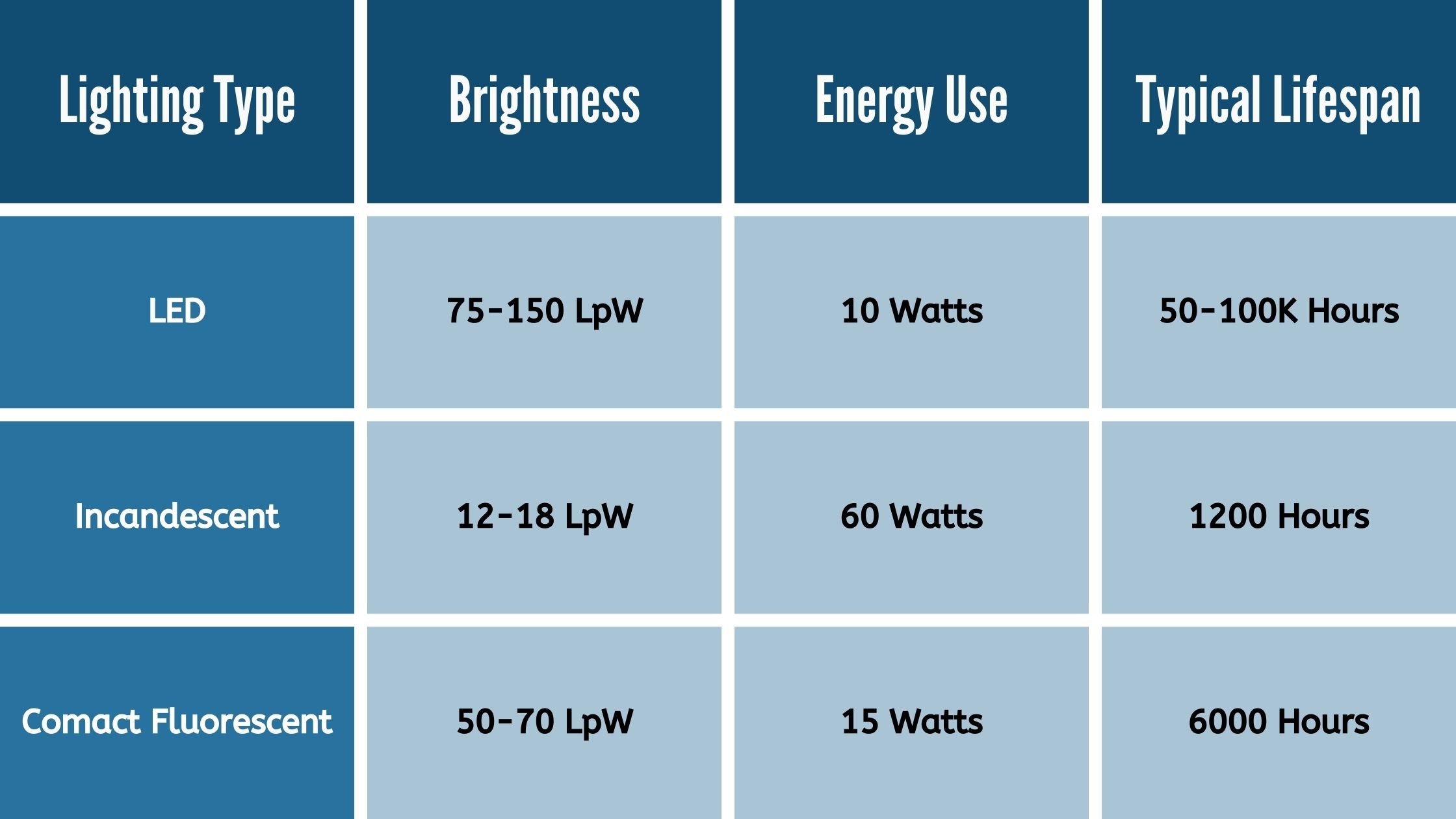


Whether they’re installed in commercial or residential properties, security camera systems have been shown to deter criminality and provide property owners with a reliable way to monitor their buildings around the clock. However, effective CCTV systems often require extra integrations.
Homeowners and professional security teams must consider how property security systems are designed to make sure each piece of hardware remains functional at all times, including aspects like power supplies, positioning, viewing capabilities, and, for 24/7 protection, on-site lighting.
By ensuring properties are well-lit and by developing smart solutions like motion-activated lights, property owners can strengthen existing security systems to better protect both people and valuable assets. For homeowners and security staff looking to improve their CCTV systems, here’s how LED lighting and solar power can enhance the performance of security cameras.
Though modern security cameras can be equipped with night vision features to help teams view activity in low-light conditions, installing on-premises lights has been shown to provide additional benefits. Not only are well-lit areas easier to monitor, but data shows that increased levels of lighting may reduce serious crimes by over 35%. However, some lights are more effective than others.
When compared to traditional incandescent lighting, LED lights are considerably brighter, more energy-efficient, and longer-lasting, providing property owners with a much more reliable lighting system designed to support CCTV cameras around the clock. Comparisons are included below.

Essentially, LED lights are able to illuminate objects of interest more clearly than incandescent bulbs, as well as provide longer-lasting support to reduce the risk of lighting systems failing at inopportune times. Additionally, LED lights can be used to produce strong directional beams of light to ensure high-security areas are well-lit whilst minimizing the threat of camera lens glare.
In some situations, homeowners and property security teams may decide permanent lights are not appropriate to improve on-site security. For example, property owners may not want to draw attention to buildings located in secluded areas or may wish to mask the presence of cameras.
However, security cameras should still be present in these situations to ensure criminal activity is detected if it does occur. Motion-activated LED lights are ideal for such installations, enabling teams to clearly view suspicious activity if connected motion sensors are triggered. Additionally, installing motion-activated lights will help property owners to cut down on average energy costs.
It’s important that appropriate security cameras are chosen for use with motion-activated lights, as all installed devices will need to be capable of adjusting quickly to changing light conditions. For systems intended to cover property exteriors, look for a bullet security camera with infrared or low-light functionality to ensure the system is able to switch between light conditions suitably.
Solar-powered technology is typically associated with energy efficiency and sustainability; whilst this remains true for solar-powered security cameras and solar lighting systems, there are a number of significant additional benefits that property owners should take the time to consider.
Starting with energy efficiency, solar-powered cameras are both eco-friendly and cost-effective, with these devices able to harness naturally occurring sunlight to produce power, eliminating the need for a typical mains power supply to help property owners to reduce recurring energy costs.
Wi-Fi-enabled solar-powered security cameras require no physical wires to function, meaning they can be installed in almost any location to provide effective coverage. This is ideal for use in remote areas where securing a permanent power supply may be challenging or for extending the size of an existing security camera system without committing to additional installation costs.
Solar-powered generators can also be used as a backup power source in combination with a standard wired security system. This means if the main power supply to the property fails for any reason, installed security cameras will remain functional. Many commercial solar-powered cameras and lights can even last anywhere from one to five days on a single battery charge.
Some people may assume solar-powered devices are only functional in direct sunlight, though this is a common misconception. Solar-powered security cameras and exterior lighting systems are still operable during cloudy and rainy days as excess power will be stored within attached batteries, meaning security teams can rest assured that their properties will remain surveilled.
CCTV camera networks are an essential component of modern property security systems, providing homeowners and security professionals with a reliable way to monitor their buildings and deter instances of criminal behavior. However, without support from additional technologies, installed surveillance cameras may become ineffective in certain circumstances and situations.
Primarily, many security cameras can struggle to produce clear footage in low-light conditions, so reliable lighting systems must be considered. By ensuring properties are well-lit with efficient LED lights and that installed devices are connected to reliable solar-powered energy sources, property owners can enhance the performance of security cameras to improve on-site security.
